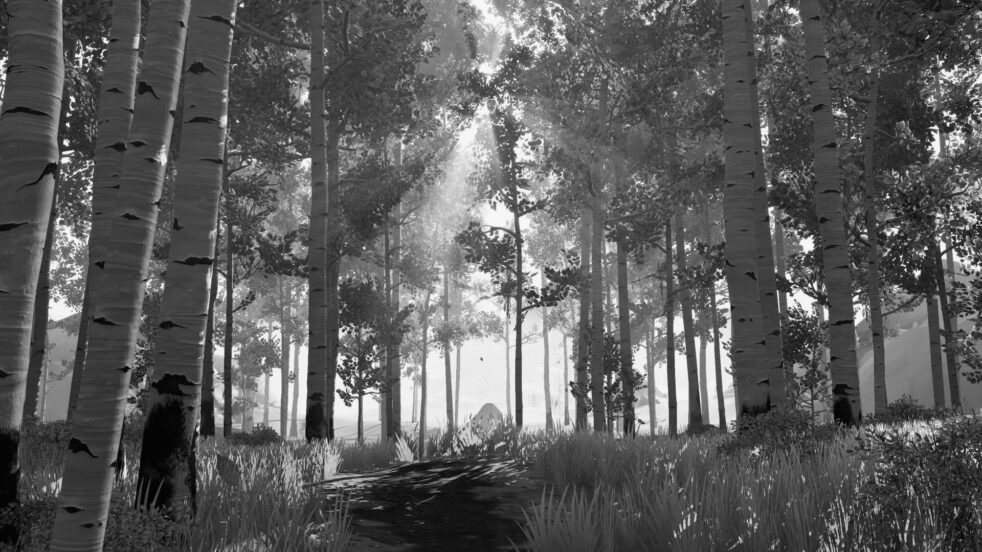Our Take: 4/5 Stars
Following its release in early 2016, “Firewatch” became an instant hit among the gaming community, aided in part by its popularity as a game featured in “let’s plays” on YouTube. As an early example of the emerging genre of “walking simulator” games, “Firewatch” set itself apart from the crowd through its stunning visuals, moving story, incredibly realistic dialogue and uniquely immersive atmosphere. Even seven years after its initial release, the online community surrounding the game is consistently active. From the Reddit page for the game receiving posts daily from new and old players alike to still being the subject of YouTube videos regularly, the game has certainly cemented itself as a significant name in the world of video games.
Notably, “Firewatch” has a more significant focus on its world, story and atmosphere than it does on developing unique or revolutionary gameplay. In many circumstances, this would be a strong hit towards the perception of the quality of the game, but in the case of “Firewatch,” this shifted focus lends itself well to point the player to experience the game much more like an interactive novel than a traditional video game. This strengthens the emotional impact of the game, as it tells the story of the protagonist Henry and his quest to escape his past.
Henry is experiencing a type of midlife crisis, triggered by his wife’s diagnosis of early-onset dementia. He takes the job as a firewatch in the Wyoming wilderness in the Shoshone National Forest in an attempt to run away from his past and move on. The player experiences the entire game alone, with their only companion being Henry’s supervisor Delilah through conversations on their radios. Throughout the summer, Henry and Delilah form a deep bond, spending hours discussing the circumstances that drove them both to choose such a uniquely isolating career.
Throughout the game, there is a sense of loneliness and isolation that is underlined by both the beautiful but remote setting and the extremely limited interaction between the player and NPC’s (non-playable characters). This sense of isolation forces the protagonist, and the player themselves, to look inwards and reflect on what exactly they are trying to run from. While it is clear that Henry is trying to run away from the tragedy of losing his wife so young but having to watch her rapid decline and experience her forgetting who he is and the life they shared, it is much less explicit what the player is running from, or even that they are running from something in the first place.
While choosing to escape the real world for a short time by playing a video game is much less intense than committing to a summer of isolation in the wilderness, it is still a form of escapism that the player of the game is participating in.
“Firewatch” forces players to come to terms with this reality, and calls them to reflect on the circumstances in their own lives that draws them to this type of game. The answer may be as simple as wanting to experience something different than their everyday lives as a student or an employee, or it can often be a much deeper or more complex emotional struggle that the player is inadvertently avoiding confronting by playing video games.
“Firewatch” continues to hold its own in the genre of “walking simulator” games, a genre which has come to include many other games that resemble an interactive novel, by setting itself apart through magnificent visuals, an incredibly moving story and an exquisite amount of player freedom. Recently, the game developers added a new game mode in a free update, in which there are audio tour checkpoints throughout the world that players can visit during the game to get more insight into the developer intentions and backstory of different game details.
This new game mode adds to the interactive novel component of the game, as players are literally guided through different parts of the game’s story that developers want to highlight, as well as learning a new story about the game’s development.
In this mode, the developers reveal the deeply personal ties they have to the different plot points included in the game and their inspiration for the different methods of execution throughout the game. The developers discuss the things in their life they felt they were trying to run from that inspired the game as a whole, making players feel a unique connection to the game and its development inspiration.
“Firewatch” is a game that has truly stood the test of time, telling the uniquely human story that nearly everyone has experienced in their own way throughout their life, of having something they feel they have to run from and eventually being forced to confront and accept whatever they are running from.
